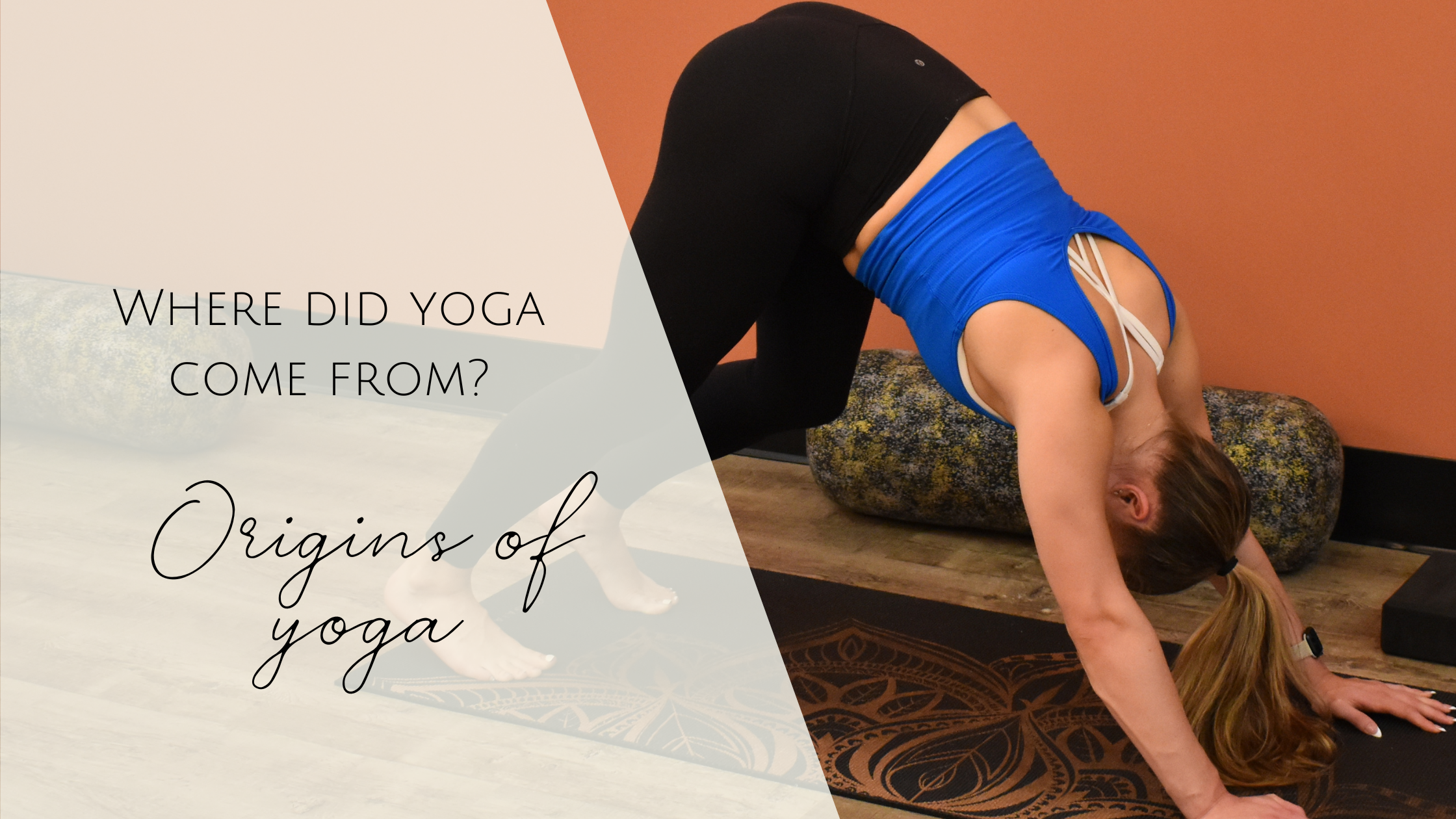Register for the Origins of Yoga lecture on Friday February 24th at 7:30pm.
Where did yoga come from?

You probably already know that yoga is an ancient practice. But how ancient? And where in the world did it start?
Let's first start with the definition of yoga. Yoga comes from the root Sanskrit word, "yuj", which means union or to unite. Yoga is a practice of controlling the senses and ultimately, the mind. To do this, yoga is created from several practices. Physical postures, or asanas, are only one part of yoga.
Yoga is an indigenous practice with origins in both Egypt and the Indus Valley (two civilizations that date back over 5,000 years).1 There are several mentions of yoga through ancient texts including but not limited to:
- Hieroglyphics found in Kemet (Egypt) (10,000 years ago)
- The Bhagavad Gita (dating back to 6th-3rd Century BCE)
- The Katha Upanishad (dating back to 800 – 600 BCE)
- The Svetasvatara Upanishad (600 – 500 BCE)
- Patanjali’s Yoga Sutras (dating between 200 BCE – 200 CE)
- The Goraksasataka (13th Century)
- The Hatha Yoga Pradipika (15th Century)
Some of these texts are also used in religions such as Hinduism, Buddhism, Jainism. However, yoga as a practice can be practiced without the religious ties.
Let's start with the ancient hieroglyphics in Kemet. One of the oldest spiritual practices with written evidence can be found on the walls in Kemet (now modern day Egypt). This yoga practice is known today as Kemetic yoga. Kemetic yoga focuses on the movement of energy through the body in order to connect with one’s higher intelligence and the divine.2
According to Patanjali’s Yoga Sutras, there are eight limbs of yoga:
- Yamas: Principles that outline how we should treat others and the world around us
- Ahimsa (non-harming)
- Satya (truthfulness)
- Asteya (non-stealing)
- Brahmacharya (abstinence)
- Aparigraha (non-hoarding)
- Niyamas: Standards by which we should practice self-discipline
- Saucha (cleanliness)
- Santosha (contentment)
- Tapas (heat)
- Svadhyaya (self-knowledge)
- Ishvarapranidhana (full surrender to the divine)
- Asanas: Practice of the physical postures
- Pranayama: Breath control
- Pratyahara: Sense withdrawal technique that teaches us the way to journey inward and find ultimate peacefulness
- Dharana: Concentration
- Dhyana: Meditation
- Samadhi: Enlightment
As if that's not enough of an expansion of what we may think of yoga as today, in the Bhagavad Gita, Krishna speaks of four types of yoga – bhakti, or devotion; jnana, or knowledge; karma, or action; and dhyana, or concentration (often referred to as raja yoga, though not all sources agree on the term). Each of these types of yoga are considered paths to achieve moksha, the ultimate goal according to Hindu understanding.3
It's important to note that asana, or the physical practice of yoga shapes, was not the main focus of a yoga practice until recent history. Yoga is an extensive, ancient spiritual practice, that appears to be a part of both Kemetic and Indian history.






